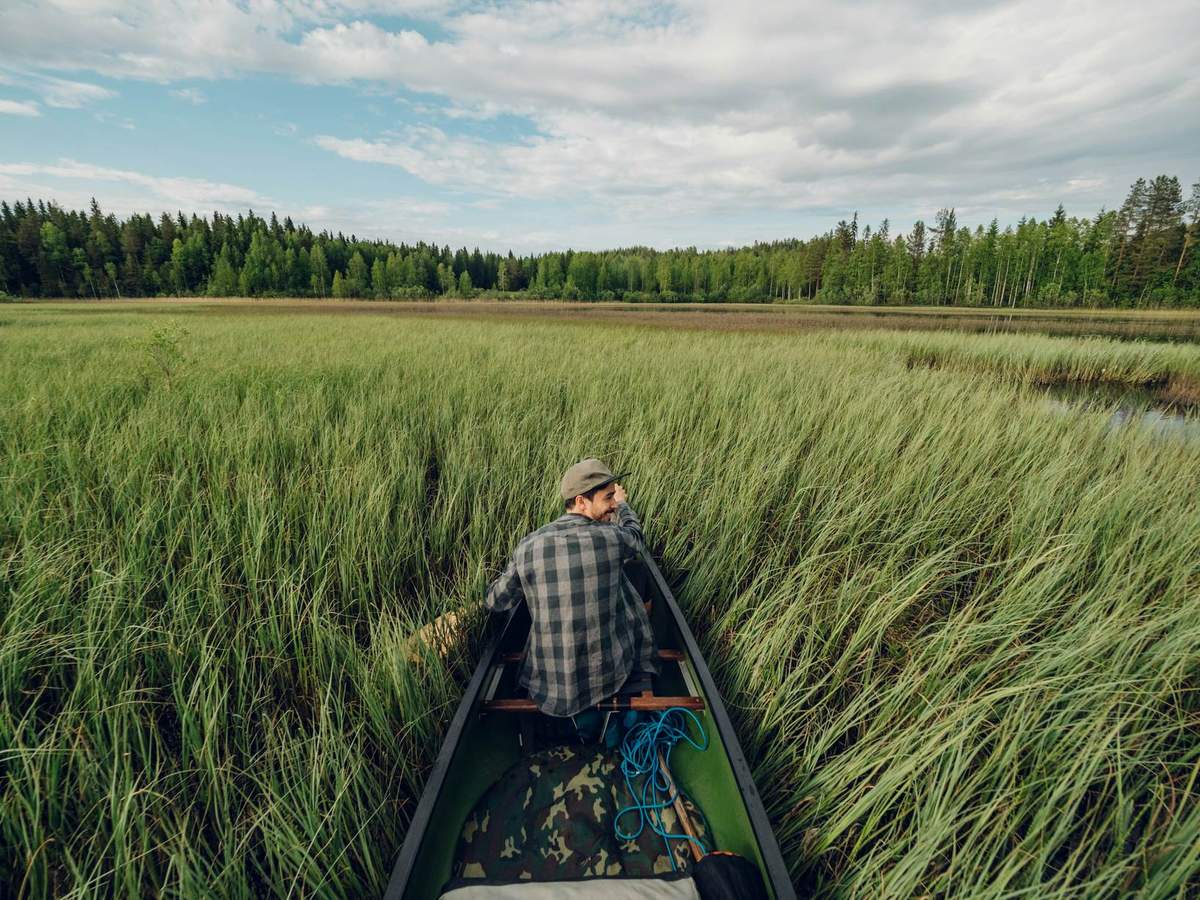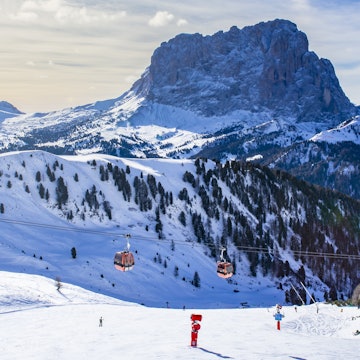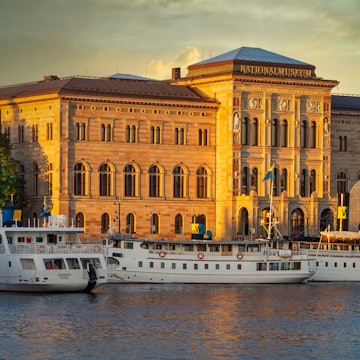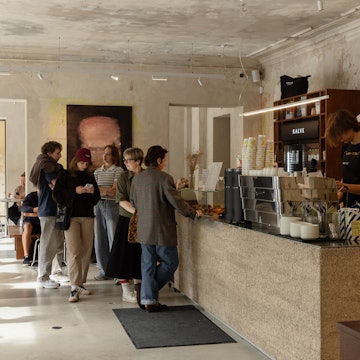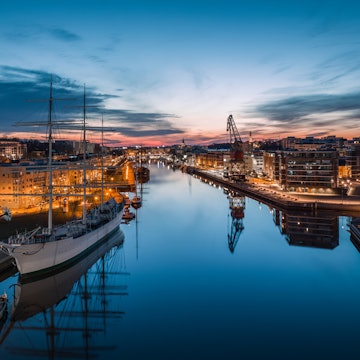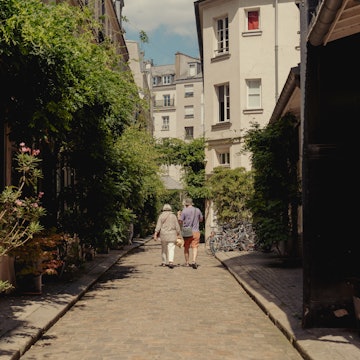

Temppeliaukion Kirkko (also called the Rock Church). Andrei Bortnikau/Shutterstock
Juxtaposing Nordic tranquility and modern European dynamism, Helsinki is a city in perpetual motion. It is forward-thinking and becoming increasingly international in outlook while managing to keep its Finnish character intact. Helsinki may lack the medieval architecture of Tallinn, Stockholm and Riga, but it compensates amply with liveable spaces, quirky contemporary buildings and a thriving design culture.
Visit the capital of Finland in winter and you’ll find a snowy white city lit up by holiday lights, icy temperatures all but forgotten in steaming saunas and world-class museums. Come in summer and enjoy alfresco nightlife, music festivals, open-air harbor markets and excursions to forests and beaches where you can make the most of the long, long days.
Not sure where to start? Consider adding these 20 best things to do to your Helsinki itinerary.

1. Discover the historic markets of Helsinki
Helsinki mixes tradition and modernity, and its many markets are the embodiment of this philosophy. From bustling outdoor stalls to charming indoor halls, every market offers something unique.
Helsinki’s historic Kauppatori (Market Square) in the city center comes to life in the summer, when stalls serving fresh peas, blueberries, raspberries, strawberries and cloudberries line up alongside street food and souvenir stands around the 1835 Keisarinnankivi (Tsarina's Stone) obelisk on the waterfront.
Close to Kauppatori, the Vanha Kauppahalli (Old Market Hall) vendors sell both traditional Finnish wares and international items. Built in 1889, the market hall is regularly listed as one of the world's best food spots, and you can sample everything from cloudberry jam to pickled herring. Try the Eriksson oyster bar for bivalves hailed as the best in Helsinki.
If you’re looking for a coffee break or gifts, pop into the early-20th-century Hakaniemi Kauppahalli, a covered market on Hämeentie. Its food court and spaces dedicated to crafts, textiles and flowers spread across two floors. The Hietalahti Flea Market, a popular shopping stop at the western end of Bulevardi, displays a large selection of secondhand clothing and unexpected surprises of all sorts; the market is most active on Saturdays and Sundays.
Planning tip: In summer, grab some lunch fixings from Kauppatori or the Vanha Kauppahalli before taking the short ferry ride to Suomenlinna island for a picnic.

2. Admire the grandeur of Helsinki's cathedral
Rising above Senaatintori (Senate Square), Helsinki's cathedral – Tuomiokirkko to locals – dominates the city skyline. The cathedral was constructed between 1830 and 1852 to honor Tsar Nicholas I of Russia, who also governed Finland as Grand Duke for 30 years during the country’s century of Russian rule.
On the cathedral's roof, statues of the apostles keep watch over people pausing to snap photos and chat on the steps dropping down to the square. The cathedral was designed by German architect Carl Ludvig Engel, but the statues were a later addition – it was only after Engel's death that people noticed that the church's proportions were not symmetrical.
3. Walk through Esplanadi Park
Lined with cafes and shops, the leafy strip known as Esplanadi is a breath of sophistication in the middle of Helsinki. This is where members of Finland's cultural elite have gathered since the late 19th century, and the surrounding buildings and parklands have a tangibly Central European feel.
Famous Helsinki residents from composer Jean Sibelius to painter Akseli Gallen-Kallela met in Esplanadi's fabulous, chandelier-decked Kappeli pavilion, eating and drinking till the small hours of the morning. The restaurant here is still loved by locals and visitors, as are the many cafes along Pohjoisesplanadi.
Planning tip: Visit Esplanadi during the summer, when regular free concerts take place on the Espa Stage opposite the Kappeli restaurant.

4. Enjoy inspired shopping in Helsinki’s Design District
Helsinki’s dedication to design is visible on every corner, and visitors can dive in by exploring the great shopping opportunities in the city's Design District. Some 200 shops sell fashions, home decor and lifestyle products, bringing together a lively community of creatives, crafters and artists in Helsinki’s central avenues.
The Design District is roughly bound by Senaatintori, Kampii, Bulevardi and Korkeavuorenkatu. With its bright patterns and high-quality fabrics, Marimekko is an international symbol of Finnish style, and its showroom sits on Aleksanterinkatu. Lesser-known boutiques such as Annankatu's Lokal, focusing on handcrafted furniture and ceramics, are equally loved by locals.
Other brands to look out for include Iittala, producing glassware and ceramics since the late 19th century, and Fiskars, the oldest Finnish company still in operation, known for its orange-handled scissors.
5. Enter the stunning Temppeliaukio Kirkko
Temppeliaukion Kirkko, also known as the Rock Church, is one of Europe’s most unusual religious buildings. Carved out of solid rock in 1969, this Lutheran chapel in Helsinki’s Töölö neighborhood, designed by brothers Timo and Tuomo Suomalainen, regularly holds orchestral concerts in its circular, rock-cut hall. It is hailed for its acoustics and is a classic example of Finnish minimalist, nature-inspired architecture. Climb to the roof to see the green copper dome emerging shyly from the rock.
Planning tip: The church is open to visitors, except during services – check the times before visiting.

6. See the futuristic design of the Oodi library
Set beside the railway tracks running north from Helsinki, a series of cultural spaces showcase the country's long dedication to learning. The most striking of them is the award-winning modernist Oodi central library, which hides airy reading spaces, shelves of books and useful facilities for Helsinki citizens (such as a sewing area and music studio) under its curvy contours.
The upstairs cafe and terrace have views of the imposing Parliament House, which was built in the 1920s. Nearby is the glassy Musiikkitalo concert hall, where you can buy recordings of classical music at the shop Fuga Musiikki.
Planning tip: If you have children in tow, there are several indoor and outdoor play areas around the library, as well as a soundproof quiet room inside for reading stories.
7. Stroll among the picturesque wooden houses of Käpylä
At the end of WWI, the capital of newly independent Finland saw major redevelopments to solve the housing shortage created by the conflict. Architect Martti Välikangas designed a new residential area of affordable homes in the Käpylä area of Helsinki.
The neighborhood – often referred to as “wooden Käpylä” – was completed in 1925 in the Nordic Classicism style. It stands in sharp contrast with Helsinki’s modern core, with its colorful collection of low-rise timber houses surrounded by greenery. Tree-lined Pohjolankatu is the neighborhood's main artery.

8. Explore the Suomenlinna fortress
Helsinki has more than 300 islands, from uninhabited islets to the one containing the substantial Suomenlinna sea fortress, a site dating back to the 1740s and Helsinki's only UNESCO World Heritage Site. Ferries to Suomenlinna run daily from the quay in front of the Kauppatori market.
On the island, be prepared for plenty of walking. The fortifications and barracks host multiple museums, from toy and military collections to the Suomenlinna-Museo, which explores the fortress' long history.
Paths lead across the island to viewpoints and picnic spots where locals sit out in the summer. Peek inside the WWII submarine Vesikko, and wander around the old walls and cannons. There are numerous cafes and restaurants where you can rest your feet and refuel.
Planning tip: Suomenlinna is accessible throughout the year, but the winter months are a particularly magical time to visit, with the pink-colored barrack buildings covered with snow and the island surrounded by a frozen sea. Buy tickets for the HSL (Helsinki Regional Transport Authority) ferries on the quay at Kauppatori.
9. Wander through the green spaces of Kaivopuisto
Kaivopuisto is one of Helsinki's best-loved parks. Flanked by the Baltic Sea and home to some of the city's most grandiose buildings, the park became a bourgeois destination for leisurely walks and spa treatments in the 19th century, and it remains a calm escape in the heart of Helsinki.
Planning tip: Locals from every walk of life gather in the park daily with their dogs, kids and picnic baskets but especially during the Labor Day celebrations from April 30 to May 1, when tens of thousands of people gather to celebrate at Kaivopuisto.

10. See a sublime sunset at Tähtitorninvuori
Rising next to the terminal for ferries to Stockholm, the viewpoint atop Tähtitorninvuori (Observatory Hill) is one of Helsinki's best-kept secrets. Climb this 30m (98ft) hummock for fabulous views toward the turquoise-domed cathedral.
Pathways crisscross this elevated green space. It's hard to imagine that the parking area carved into the rock beneath also functions as an air-raid shelter – part of Finland’s highly developed nuclear defenses. Crowning the hill is an observatory dating from 1834, which contains an astronomy visitors center, open Thursdays to Saturdays.
11. Discover Finnish creativity at Kiasma and the Ateneum
Opposite the Eliel Saarinen–designed Central Railway Station, the Ateneum forms part of the Finnish National Gallery. The art collection here covers everything from 18th-century rococo works to the output of 20th-century art movements, and it provides a crash course on Finnish art.
Notable Finnish works include Eero Järnefelt's paintings of people and landscapes from Koli National Park in the Finnish Lakeland, Akseli Gallen-Kallela's scenes from Finland's national epic, the Kalevala, and Helene Schjerfbeck's striking portraits, as well as masterpieces from the likes of Paul Cézanne and Edvard Munch.
Nearby, Kiasma has a mix of contemporary international and Finnish exhibitions and runs tours in English every other Friday.
Planning tip: Be sure to check out the striking railway station at the center of Rautatientori (Railway Sq), which is famous for its pink granite facade and Lyhdynkantajat (Lantern Bearers) statues by sculptor Emil Wikström.

12. Plunge into Helsinki's sauna culture
Saunas are integral to the Finnish way of life, and you should try to visit one of the many steamy establishments dotted around town to get a feel for the Helsinki lifestyle.
We recommend Löyly, an urban sauna and restaurant complex beside the Baltic in the developing Eira neighborhood. Dipping into the sea as part of a sauna session is made easy here. Just book a sauna, soak up the heat, then plunge into the water from the platform – followed by a mad dash back to the sauna. Afterward, enjoy quality food and drinks in the on-site restaurant.
Planning tip: The sauna, swimming areas and restaurant at Löyly are open year-round – meaning opportunities for ice-hole swimming in the winter.
13. Catch a show at Tavastia
Despite its relatively small size, Tavastia is one of the most prestigious rock music venues in Finland. It opened in 1970 and is now one of Europe's oldest rock clubs. Many influential acts have performed here during its rowdy history, from Finnish bands like HIM, Children of Bodom and Nightwish to the Foo Fighters and Siouxsie and the Banshees.
It's not all megastars at Tavastia; the venue regularly gives the floor to up-and-coming bands. Whether the gig is big or small, the atmosphere is always magnificent.
Planning tip: On Saturdays, the disco tunes kick in at 11:30pm for those seeking a late-night bop.

14. Take photos on Huvilakatu
The central thoroughfare of Huvilakatu, with its colorful art nouveau architecture, is one of the most photographed streets in Helsinki. Even if you don’t take many snaps, it's worth visiting to see the striking facades. The street and its buildings were constructed between 1906 and 1910, and most have kept their original brightly colored frontage. Huvilakatu ends at a green park beside the Baltic Sea, a short walk from Kaivopuisto.
15. Learn all about Finland's design legacy
Located on the border of the central Punavuori and Kaartinkaupunki neighborhoods, the Architecture and Design Museum is essential for anyone intrigued by the Finnish love of creating bold everyday objects. Exhibitions have covered Ilmari Tapiovaara's woodwork and Eero Aarnio's chairs and lamps up to Lotta Nieminen's modern illustrations and children’s books.
Detour: For glasswork and ceramics, a side trip to the Arabia Museum and Iittala store in Helsinki’s Arabianranta district is a must.

16. Immerse yourself in the ultramodern exhibitions at Amos Rex
Built beneath an old bus station, the Amos Rex art museum witnessed huge queues when it first opened in 2018, and lines are still common on busier days. And little wonder – the contemporary art exhibitions include top names in the art world, with works that are a perfect match for the somewhat eerie underground space.
Above ground, it's all fun and games. The museum's bulging skylights form the hub of an architecturally striking public space that adults and kids love to wander around.
Planning tip: The museum is open daily except Tuesdays, but you can peer in through the skylights any day of the week.

17. Explore rural Finnish life at an open-air museum
Seurasaaren Ulkomuseo, on the small island of Seurasaari to the west of Helsinki, features an interesting collection of historic buildings that showcase the lifestyles of people living in different parts of rural Finland over the centuries. The open-air folk museum is best explored during the summer, as much of the experience takes place outdoors.
Kids will love the forested grounds of Seurasaari, which are dotted with original wooden cottages and farmhouses, some dating as far back as the 18th century. All have been relocated to the island from other parts of the country, offering a snapshot of Finnish life.
Planning tip: Take the bus from central Helsinki to the bridge leading to Seurasaari, from which you can walk to the museum.
18. Delve into Finland’s history at the National Museum
You can't miss the Jugendstil building of the Kansallismuseo (National Museum) on Mannerheimintie, opposite Alvar Aalto's striking Finlandia Hall. Partly the work of Eliel Saarinen, the museum’s castle-meets-medieval-church design is a defining example of the National Romantic style in Finnish architecture.
It provides an eye-catching space for a collection of exhibits relating to Finnish cultural history from the Stone Age to modern times. The museum opened in 1916, and the collection spans Finno-Ugric artifacts and old coinage to modern music. You can also see some 40,000 items from other world cultures, from as far afield as Alaska and Namibia.
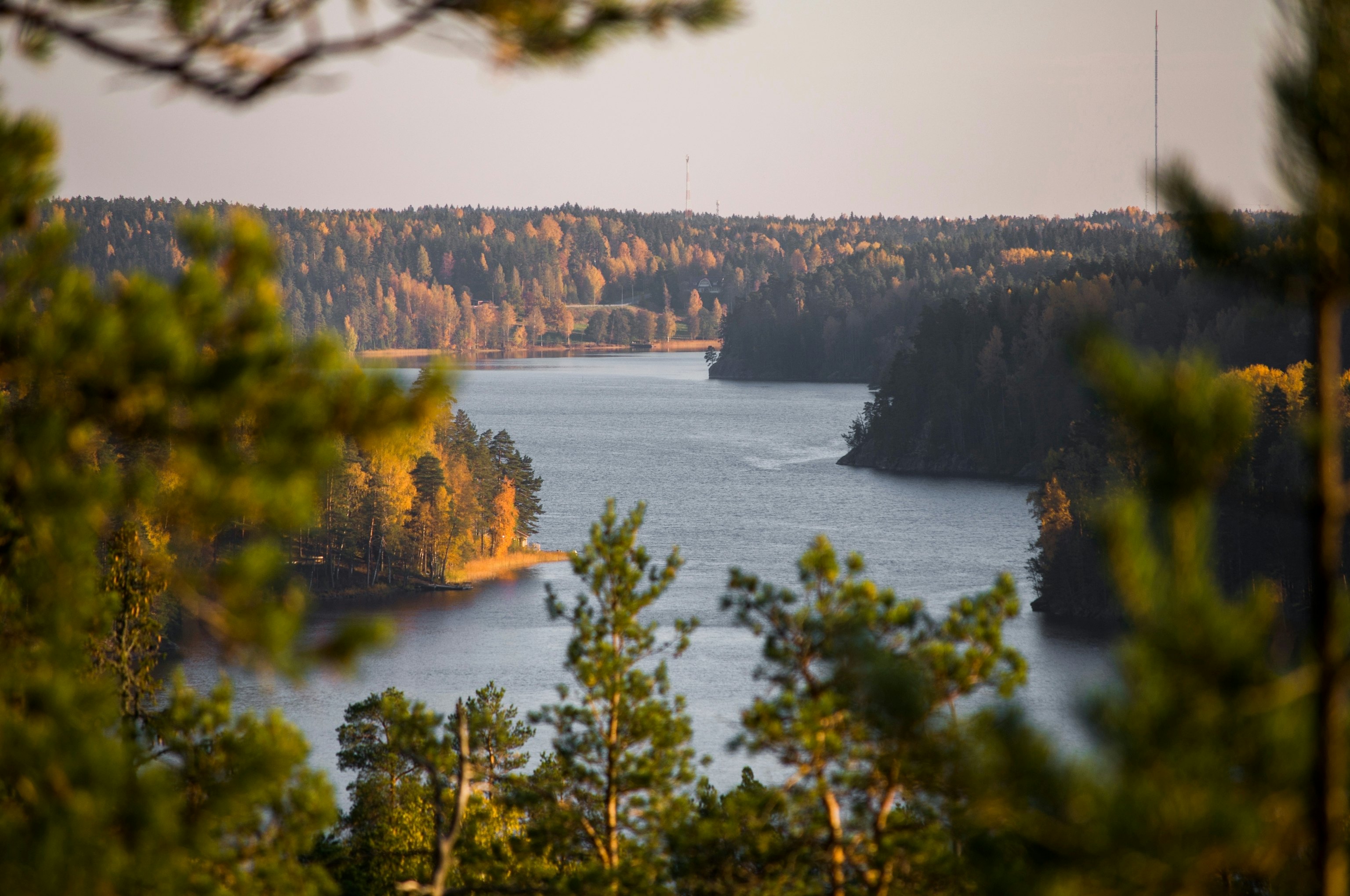
19. Explore Nuuksio National Park
About 35km (22 miles) northwest of the city, Nuuksio National Park is ideal for a peaceful outing from Helsinki, with landscapes ranging from ponds and lakes with jewellike waters to ancient forests, cliffs and gorges.
Several trails loop around the Suomen luontokeskus Haltian (Finnish Nature Center Haltia), with viewpoints and campfire spots, as well as a center for downhill mountain biking. You can also get off the bus in Kattila and walk along trails to the nature center.
Planning tip: To get here, take a bus or train from Helsinki to Espoo, then transfer to a bus to the nature center, where you can pick up park maps. The bus ride takes about 20 minutes. There are a few accommodation options in the park should you wish to relax in nature overnight.
20. Experience Finnish fine dining
The Finnish capital’s dining scene focuses on sustainability, farm-to-table ingredients and Nordic minimalism. This makes Helsinki a top choice for food lovers in search of memorable fine dining.
Michelin-starred Grön is a Helsinki institution that works magic with produce from local farms while keeping sustainability in mind; the menu is always worth sampling, and vegan options are available. You’ll also want to book ahead for the upmarket BasBas Kulma, where you can explore Finnish cuisine via a tasting menu.
Also check out the Michelin-two-starred Palace – open since 1952 – with its gorgeous harbor view, an innovative take on Finnish gastronomy and a reclaimed ship’s propellor welcoming diners by the entrance. For lunch in a historic setting, don't overlook Kappeli in Esplanadi Park.






